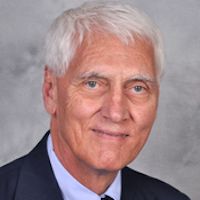Article
Recommendations for In-Flight Emergencies Released
Author(s):
The guidelines provide best-practices for physicians in these situations, though many physicians may be hesitant to provide aid during in-flight emergencies.

Alun D. Ackery, MD
credit: St. Michael's
When faced with a medical emergency mid-flight, many physicians may be hesitant to provide help for a number of reasons, however, a group of physicians from St. Michael’s Hospital and the University of Toronto, Ontario, have created guidelines for how to manage such emergencies.
Written by Alun D. Ackery, MD, and David Kodama, MD, and colleagues, the recommendation guidelines make 4 key points for physicians to remember when in these situations:
- Medical professionals who voluntarily provide emergency medical assistance on a commercial aircraft are protected from liability.
- The cabin environment will affect patients’ vital signs as well as how to measure them reliably — e.g., normal oxygen saturation at 6000—8000 ft (1829–2438 m) is about 90% and aircraft noise may limit the usefulness of a stethoscope.
- Most of the medications in the medical kit can be administered via the intramuscular route; the administration of intravenous epinephrine should not be used for any indication other than cardiac arrest unless the medical professional is comfortable doing so or it is done under the advice of the ground-based consultant. The working environment should be optimized by creating space, turning on the cabin lights and recruiting additional help. Flight attendants should provide the medical kit and contact ground-based telemedicine support early.
- Open, 2-way communication with the flight attendants, cockpit, and ground-based consultants should be maintained to ensure the pilots can make the safest decisions for all of the passengers.
“We recognize that hearing the call go out for a physician on board a flight can be unexpected, but we do have an obligation to respond,” Ackery, the senior author and an emergency physician at St. Michael’s, said in a statement. “We hope these recommendations will provide healthcare professionals with enough knowledge to make that call a little bit less anxiety-provoking in the future.”
Although physicians in the United States and Canada (save for Quebec) are not legally required to intervene in in-flight emergency medical situations, many still feel a need to help. Although after Tamika Cross, MD, an OB/GYN at UT Health’s McGovern Medical School, had her credentials brought into question by the flight crew during a 2016 in-flight emergency, it is understandable that physicians would be reluctant to jump to the call. US and Canadian laws do protect those physicians who provide assistance to the best of their abilities
According to the guidelines, the incidence rate of in-flight emergencies is difficult to determine due to varying parameters to defining such an event, but as the rate of air traffic increases—a 2013 study in the New England Journal of Medicine recently estimated 2.75 billion passengers fly each year worldwide—the risk for in-flight emergencies increases as well. The study noted the mean incidence is most likely between 16 events per 1 million passengers and 1 event per 7700 passengers.

Gregory L. Eastwood, MD
credit: Upstate University
“Every health-care professional is likely to hear this call at some point while flying, but for most of us, treating patients on a plane is a completely unfamiliar scenario,” Ackery said in a statement. “We wanted to provide a better understanding of what to expect and how to respond if you’re called to assist in one of these emergencies.”
In a 2017 editorial published in JAMA, Gregory L. Eastwood, MD, a professor of bioethics and humanities, and medicine at SUNY’s Upstate Medical University and the State University of New York, noted that a physician’s duty to respond to an emergency is influenced by “the particular circumstances of the emergency.”
Eastwood did note, however, that during an in-flight emergency, all passengers have a role to play and a “duty to behave, cooperate, and not to distract the attendants, and they should move from their seats if requested.”

David Kodama, MD
credit: St. Michael's
The guidelines noted that flight attendants are a “critical resource” in all in-flight emergencies, as they are both trained and familiar with the aircraft and the airline’s emergency procedures. “Each airline’s kit is going to look different, and the contents aren’t always going to be familiar, which adds another layer of complexity to an already stressful situation,” Kodama, an emergency resident at the University of Toronto said in a statement.
In his editorial, Eastwood noted that he “would not hesitate to ask the cabin crew to announce again the need for medical assistance, even specifically asking if a cardiologist or other specialist relevant to the situation or a nurse or emergency medical technician is on board.”
The guidelines also recommend that fellow health care professionals (HCPs) can assist to provide optimal patient management. The 2013 NEJM study found that physicians were involved in 48% of midflight emergencies, nurses in 20%, emergency medical service providers in 4%, and other HCPs in 4%, highlighting the need for all HCPs to be prepared.
Ultimately, the guidelines stated that passengers that are HCPs, as well as the flight crew, are important resources for midflight front-line care, and the 2 entities should work together to assess and act on the situation at hand.
The recommendations were published in the Canadian Medical Association Journal.
Click here to sign up for more MD Magazine content and updates.
Related Coverage >>>
Elagolix Meets Primary Endpoint in ELARIS UF-I Study
ObsEva SA's Nolasiban Increased IVF Pregnancy Rate in IMPLANT2 Clinical Trial
To Heal and Be Happy: Choosing a Specialty and Surviving in Medical School



